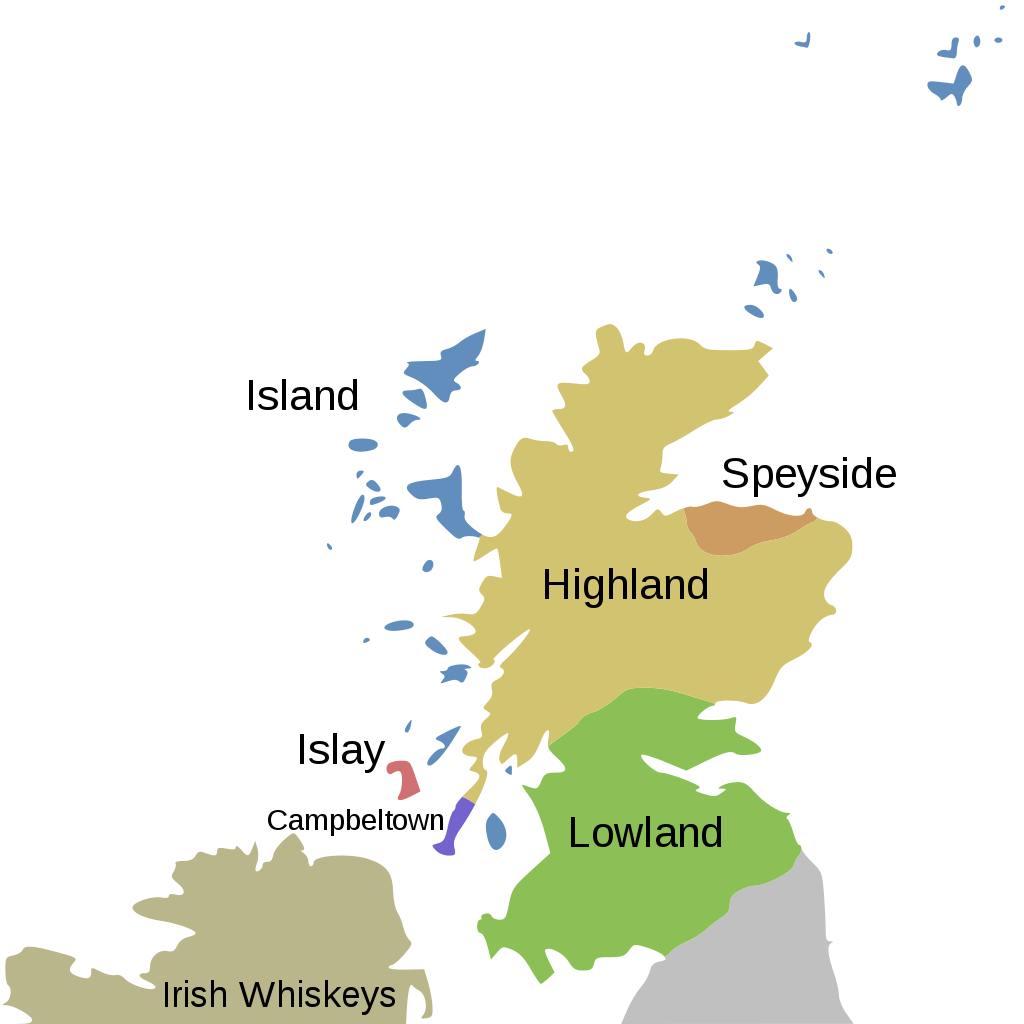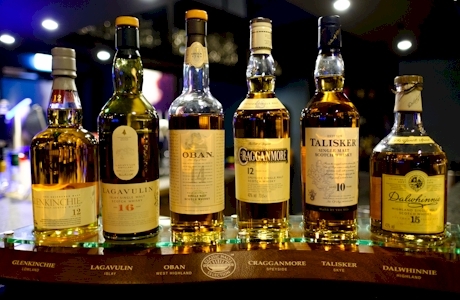CLASSIFYING SCOTCH BY REGION

Classification by region is the traditional method of categorizing Scotch whisky. From the earliest days, distillers used local grains and water as the base for their brews, resulting in a thread of commonality between all whiskies made in the region. As distillers gained sophistication in their techniques, these regional characteristics became increasingly desirable. People came from all over to buy Scotch with these identifiable regional attributes.
(Click for a list of Scotch distilleries by region)
The traditionally recognized Scotch-making regions include Islay, the Highlands, Speyside, Campbeltown, The Islands (Skye, Jura, Mull, Orkney, and Arran), and the Lowlands. Each of these regions is associated with a set of unique characteristics based on local materials, methods, and customs. Although region is still used as a generalized Scotch classifier, modern Scotch-making techniques have allowed significantly greater variation in Scotch expressions. This trend makes regional identity more of a tradition than a predictor of whisky style, but there are many producers who take great pride in continuing to make Scotches that showcase the original regional identifiers.
Islay
Islay (pronounced eye-la) malts come from the Isle of Islay which lies off the Southwest coast of Scotland. They tend to be the most distinctive of malts with a pungent, peaty aroma. The Isle of Islay has extensive beds of peat, which dramatically flavor the water used. Also, peat is burned to dry the barley, adding both peatiness and smokiness. Islay single malts are often described as having a seaweed, medicinal taste as well.
The Highlands
The Highlands comprise the largest Scotch producing region in Scotland, offering a vast array of styles and flavors as varied as its landscape. The two most identifiable Highland regions are the Eastern and Northern Highlands, and Perthshire to the Southwest.
Eastern Highlands malts originate in the area along the North Sea coast between Brechin in the south to Banff in the north. These malts are traditionally dry, big-bodied with a fragrant fruity flavor and hints of smokiness.
Northern Highlands encompasses the area around Inverness, stretching up to Wick. While most of the distilleries lie very near the coast, they are not particularly influenced by the sea. Although some Scotch produced here may show delicate hints of peat and saltiness, the majority tend to be softer and more mellow, with a malty sweetness, moderate spice, and heathery or flowery aromas.
Perthshire is traditionally considered as part of the western Highlands, just northwest of the Lowlands. It is the smallest of the Highland sub-divisions, ranging from Oban to Fort William. Perthshire malts tend to be moderately sweet, clean tasting whiskies which are both light and fruity. They are slightly richer than Lowland malts but lighter than malts from Speyside.
Speyside
Although physically located within the Highlands region, Speyside (a triangular area in the northeast bounded by the Findhorn, Deveron, and Livet rivers) traditionally produced whiskies that were significantly different and identifiable from other Highland malts. Speyside malts are generally considered the highest in quality and lineage. They are typically the sweetest of all Scotches, with a subtle complexity and delicate aromas. Fruity, leafy notes are frequently backed by a richness derived from using old sherry and bourbon casks. Speyside malts also offer extensive variety, owing primarily to the sheer number of producers competing for recognition.
Campbeltown
Once considered the finest whisky-producing region, there are now only three remaining producers. Traditionally, these are moderately dry, full-bodied whiskies with noticeable smoke and saltiness. They consistently produce some of the highest quality malts.
The Islands (not Islay!)
The Islands include Skye (to the northwest), Jura (adjacent to and just north of Islay), Mull (off the West Highlands), Orkney (far north) and Arran (due west of the Lowlands) are as varied in their styles as they are spread out around Scotland. They produce an array of malts ranging from peaty and smokey to refined and slightly sweet. They are frequently described as the offspring of Islay and Northern Highlands.
Lowlands
Lowland malts, those coming from the southern half of Scotland tend to be drier and lighter than most others, and are frequently defined as having hints of marshmallow, honey, cream, and toffee. They are usually more subtle and refined, resulting in a greater sensation of alcohol. Lowland malts are often recommended as an introduction to single malt Scotch whisky.

